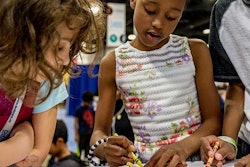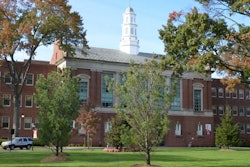The current national emphasis on science, technology, engineering and mathematics (STEM) education and careers has prompted the critical examination of pre-college preparation and undergraduate and graduate student retention in these fields. Included in this inquiry is the important assessment of STEM teaching and learning at the elementary, secondary, and baccalaureate levels. In April of this year, the Department of Education released its framework for pre-K-12 STEM education—part of its elementary and secondary education blueprint for reauthorization.
The framework relies on several hallmark elements of the administration’s education policymaking: competitive grants, evidence-based and “out of the box” approaches, and targeted resources for high-need schools. Also present is the directive that states develop a comprehensive pre-K-12 statewide strategy to align resources, support college- and career-ready standards, and strengthen STEM instruction.
As any educator will tell you, a wealth of resources, world-class alignment, inclusive standards—or all of these things combined—are good. But, if you do not have qualified teachers with a firm grasp of their subject matter and effective instructional techniques, the lion’s share of students simply will not learn. The Education Department seems to grasp this concept, as evidenced by a policy that emphasizes teacher preparation and pedagogy tailored to the needs of today’s young learner.
Yet while effective teaching at the pre-K-12 level is imperative to building a foundation for ongoing learning in a complex world, innovative pedagogies are not the sole responsibility of elementary and secondary educators. Higher education struggles to identify and employ effective teaching practices as well, especially in STEM disciplines. If we expect pre-K-12 to set the foundation for math and science coursework beyond high school, why is it that so many first-year STEM courses turn students off to STEM and fail to advance would-be majors past the first or second semester? Just who is holding higher education accountable for effective teaching in STEM?
At the postsecondary level, the expectation should be that students have a quality introduction to math and science, whether seeking STEM majors or not. Of course, those seeking these majors should have professors skilled at advancing students in scientific disciplines. This means zero tolerance for the very practices that turn so many students off of STEM: unapproachable professors, from-the-book lectures, competitive grading practices, and systemic support for attempts to “weed out” students from STEM disciplines.
As such, STEM departments must become attuned to the education literature that addresses effective teaching methodologies for STEM coursework. They would be further wise to familiarize themselves with the foundations of feminist and multicultural pedagogy. After all, it is well established that, in order to reach national STEM goals—and to approach equity in these fields—we must successfully educate more women and underrepresented minority students in STEM disciplines.
Inclusive practices may involve encouraging students to question the role of power in the creation of scientific knowledge, allowing the intellectual space to question scientific concepts, aligning theory with real-world scientific problems and experiences, utilizing cross-disciplinary approaches, and providing a space for small group collaboration in and outside the classroom.
Proponents of these methods are quick to point out that innovative pedagogies are in fact beneficial to all students, not just women and minorities.
In short, an understanding of diverse learning environments must be a top priority of STEM departments. This means tangible support for quality foundational instruction as well as the use of innovative pedagogies, especially in introductory math and science courses. Instead of solely focusing on the delivery of course content, first-year faculty must create environments that focus on how content translates to the problems most relevant to this generation of students—a group that is facing considerable scientific challenges (e.g., climate change, genetic food production, disease prevention) that require deep scientific knowledge and global-scale humanitarian values.
If we are to act on the national charge of educating many more young minds for STEM careers, then higher education must be poised to receive not just more students, but more diverse students. Despite increased interest in STEM by underrepresented populations, there are great degree completion gaps in need of closing. It is thus critical that colleges and universities proactively receive STEM majors with the most conducive learning environment possible. We know what those environments consist of; now it’s time to act.
Dr. Lorelle L. Espinosa is the director of policy and strategic initiatives at the Institute for Education Policy, a Washington, D.C.-based independent, nonprofit organization that is dedicated to increasing access and success in postsecondary education around the world.



















